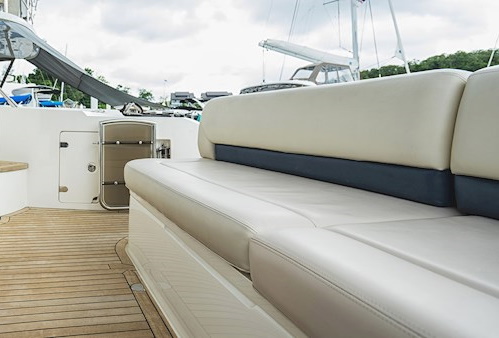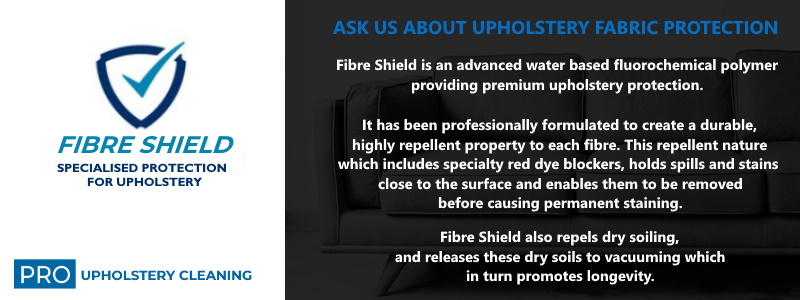Yacht Upholstery
Yacht upholstery is part of the marine upholstery group, and is made from very specific fabric materials due to the levels of exposure they receive.
To understand the history of yacht upholstery, we must look at the vessel itself. The concept of the yacht was first seen in the Netherlands around the 14th Century. They were first used as patrol boats to chase pirates and criminals and then mostly transformed into entertainment vessels by the rich afterwards.
Once they became popularised, upholstery became more of a comfort and thus more common. It wasn't until later on when synthetic fibres were researched and developed that upholstery could be made that was able to withstand the exposure to UV rays and moisture.
After this, interior design trends for yachts started to become more popularised and paved the way for the styles and colour schemes we see today.

How is Yacht Upholstery Made?
Yachts are often larger than some personal boats and thus have more areas that need upholstering. Synthetic upholstery is the ideal choice and will predominantly be used all over.
Wood
Marine wood is very integral for yachts. It comes in the form of plywood and is made from hardwood like Douglas fir.
About 5 slabs of plywood are arranged perpendicularly and then sealed with heat and special glue. A waterproof enamel is coated over the wood to ensure it is fully waterproof.
This perpendicular arrangement, along with the heat and the glue, ensures no air pockets. As such, the different plies together act as a single impenetrable unit.
You will also find that teak will be used on the exterior and mahogany or oak will be used on the inside.
Foam
There are different kinds of foams for yacht upholstery. They are mainly classified into marine exterior and marine interior foams.
Marine exterior foams are usually made of closed-cell polyurethane. Meaning it is fully water-resistant and does not absorb moisture. Medium-density foams are also a popular choice as they prevent the growth of mould and mildew.
Marine interior foams are mostly made of high-density polyurethane foams. They are extremely durable and can last very long— up to 12 years! Other forms are made of open-cell foam that allows moisture and water to pass through easily.
Fabrics
One of the most popular materials is PVC or vinyl. PVC is made from petroleum oil, and salt water (chlorine). It is a solid option and can be very cheap.
Then we have PVC blends, such as synthetic fabrics such as nylon and polypropylene coated with PVC. The fabrics are bonded with the PVC under high temperatures. Thus, ensuring that they do not split while in use or under harsh weather conditions.
For a more luxurious finish, leather will be used for the upholstery and even the trims and accents as well.

Characteristics
The general characteristics of yacht upholstery are that it must be durable and should at least be water-resistant. If not, there could be a high risk of mould growth and mildew. However, here are more specific characteristics of yacht upholstery based on material.
Wood
Marine plywood is very durable and lasts better than any other type of plywood. It is also highly water-resistant and is structurally resistant to trauma. It is also very smooth and does not have any splinters. However, one down of the biggest downside to marine grade plywood is that it can be expensive.
Foams
Foams are also quite durable and resistant to moisture. They are either waterproof/resistant or dry quickly. Added features like anti-microbial and anti-fungal treatments are also available depending on manufacturers. However, these kinds of foams are also quite pricy so the cost can add up.
Fabrics
Yacht upholstery fabrics should always waterproof or water-resistant. They should be extremely durable and practical. They are resistant to all elements of the weather and can last for years, decades even. The only downside is that most of the materials are not comfortable and they can feel quite stiff of coarse.
Because the upholstery used is often some type of vinyl or PVC, the dry cleaning method will be the best option for cleaning since those types of materials can not handle steaming.
Popular Uses
Yacht upholstery will typically be found in the form of bench seats, chairs, cushions, and sometimes for custom lounges, sofas, and couches. The materials used can sometimes be used for the accents as well such as the trim or panelling on doors and walls.
Upholstery for yachts has come a long way. The availability of different technology helps to support and create many different materials. Now, with even more durable materials being invented, yacht upholstery is evolving for the better.
If you really want to get the most out of it, be sure to use professional upholstery cleaners to maintain it for you annually. This can ensure that all the upholstery stays fresh and hygienically clean for longer.
The Best Yacht Upholstery
Cleaning Service You Will Ever Try.

